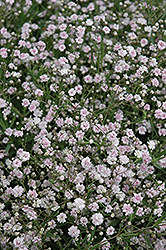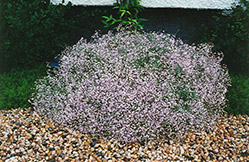Plant Library
Pink Fairy Baby's Breath
Gypsophila paniculata 'Pink Fairy'
Height: 18 inches
Spread: 24 inches
Sunlight:
![]()
Hardiness Zone: 2a
Other Names: Common Baby's Breath
Description:
A beautiful compact mounded selection covered in small, airy, pink double flowers over small silver-blue foliage; commonly used in fresh or dried arrangements; good for borders and containers; blooms early summer and again in early fall
Ornamental Features
Pink Fairy Baby's Breath features airy plumes of double shell pink flowers at the ends of the stems from mid summer to early fall. The flowers are excellent for cutting. Its grassy leaves remain silvery blue in colour throughout the season.
Landscape Attributes
Pink Fairy Baby's Breath is a dense herbaceous perennial with a mounded form. It brings an extremely fine and delicate texture to the garden composition and should be used to full effect.
This plant will require occasional maintenance and upkeep, and is best cleaned up in early spring before it resumes active growth for the season. Gardeners should be aware of the following characteristic(s) that may warrant special consideration;
- Spreading
Pink Fairy Baby's Breath is recommended for the following landscape applications;
- Mass Planting
- Border Edging
- General Garden Use
- Naturalizing And Woodland Gardens
Planting & Growing
Pink Fairy Baby's Breath will grow to be about 18 inches tall at maturity, with a spread of 24 inches. Its foliage tends to remain dense right to the ground, not requiring facer plants in front. It grows at a fast rate, and under ideal conditions can be expected to live for approximately 10 years. As an herbaceous perennial, this plant will usually die back to the crown each winter, and will regrow from the base each spring. Be careful not to disturb the crown in late winter when it may not be readily seen!
This plant should only be grown in full sunlight. It prefers dry to average moisture levels with very well-drained soil, and will often die in standing water. It is considered to be drought-tolerant, and thus makes an ideal choice for a low-water garden or xeriscape application. It is not particular as to soil type, but has a definite preference for alkaline soils, and is able to handle environmental salt. It is highly tolerant of urban pollution and will even thrive in inner city environments. This is a selected variety of a species not originally from North America.



